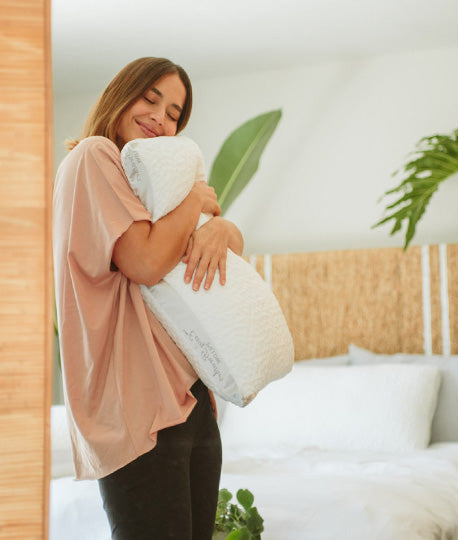Mattress Encasement: Is this something you really need? Mattress stores, including Nest Bedding, sell encasements to cover your mattress. But what exactly does a mattress encasement do for you, and how do you care for it?
If you suffer from allergies, such as a dust mite allergy, you are well aware of mattress encasements. Encasements are designed to cover the entire surface of the mattress and prevent dead skin cells, dust mites and other organic material from passing through the sheets and pad and settling into the foam or fibers inside of the mattress. These organic materials, combined with moisture from your body, will attract and support dust mites. No matter what material your mattress is made from, organic material such as dead skin and moisture will attract and support dust mites, whether wool, latex, foam or any other material. You will hear some people say that natural materials are dust mite resistant, and what they mean is that natural materials breathe, which allows the bed to remain dry, and thus preventing dust mites.
And encasement is designed in such a way that the pore size of the fabric is so close together that it will not allow microscopic materials from passing through. A traditional mattress pad will not prevent dead skin cells from passing though into the mattress. You need to purchase an encasement specifically designed to block these tiny, microscopic materials.
Are these encasements necessary? I think encasing a mattress is a case by case evaluation. If you do not suffer from dust mite allergies, our simple waterproof and breathable protector is an affordable and practical way to protect your new mattress from accumulating dust mites and other debris such as pet dander, dead skin cells, etc. These materials will fall onto the surface of your protector and make it easy to wash away. Without a protector, they fall into the fibers and foam, accumulating over time and providing a breeding ground for dust mites, and helping lead to early breakdown of your mattress materials. However, if you do have allergies, an encasement will ensure the entire surface is covered and free of debris.
The main issue you need to avoid with encasements is that most people put them on, which can be a real struggle, then never wash the encasement, which catches all the "stuff", leading to a very dirty encasement and a dust mite haven.
For my customers who do deal with such allergies, what I will recommend is an encasement AND a protector. That way, they do not need to remove the encasement but for once a year, and they can wash the protector as often as they wash the sheets, washing away any debris.
So, do you NEED an encasement? If you suffer from allergies, it's a good measure. But don't neglect to wash it at regular intervals, unless you add a waterproof, breathable protector, which can easily be removed and washed.





